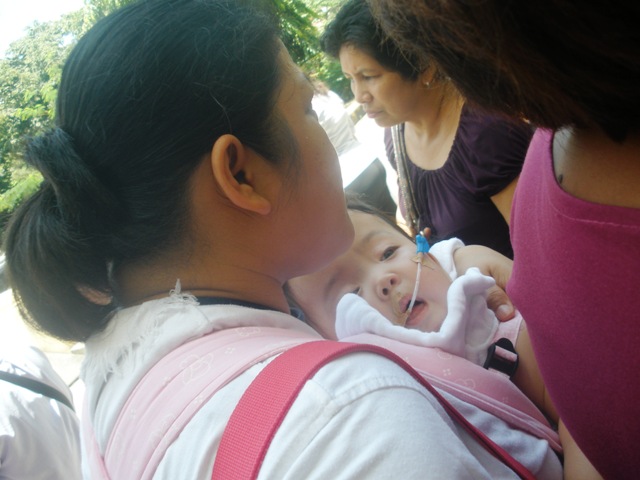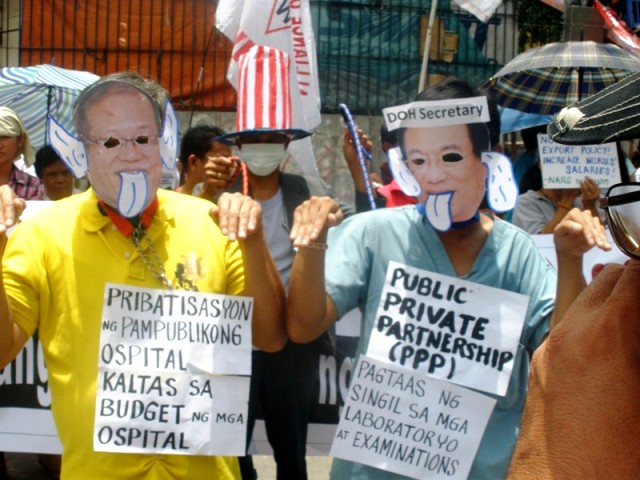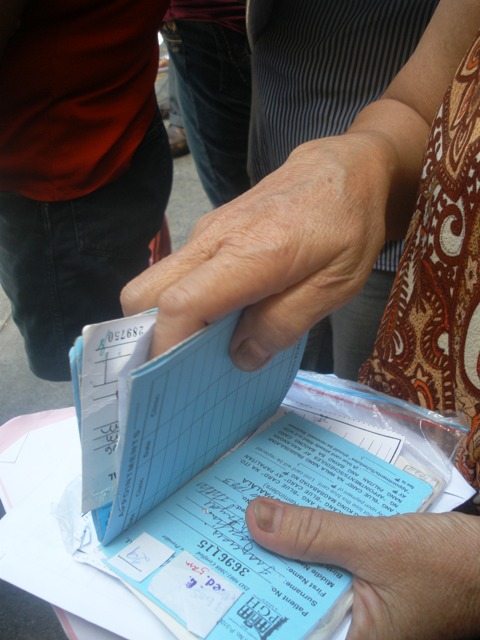The Context of Hiring Contractual Personnel at the Department of Health
The Philippine government’s moral responsibility to save the lives of thousands of Filipino people from dying due to poor maternal and child health situation pushed the Department of Health to adopt the Maternal, Newborn and Child Health Nutrition Strategy last 2008 as a significant element of its overall framework of Universal Health Care.
Four years later, the grim picture of maternal deaths, neonatal and infant deaths, and the poor access of thousands of mothers and children to essential health care remains to be seen. To fast track the MNCHN implementation nationwide at the local levels, the National Center for Disease Prevention and Control (NCDPC) under the leadership of its former Director, Dr. Eduardo C. Janairo, hired more than a hundred job order/contractual personnel to augment the health manpower who are supposed to catalyze the implementation of DOH health programs. Other than those contractual personnel last 2009, the following were hired between 2010 and 2011:
•27 hired 2010
•100 hired between February and March 2011
•13 hired June 2011
The said job order/contractual personnel were hired as program-based personnel and not just project-based. This simply means that the contribution of these personnel must not be measured at a project level but rather in their significant inputs to the overall health programs of DOH. In effect, they will be the critical mass to the Philippine’s “scores” in achieving Millennium Development Goals # 1, 4, 5 and 6 by the year 2015.
In the DOH organizational structure, NCDPC is under the Policy and Standards Development for Service Delivery Cluster. Policy and standards development in its real sense is not simply paper work. This requires validation of data, documentation of evidences and actual field experiences of health policy implementers, testing of strategies, validating correct target/s of health programs, motivating LGUs for its implementation, monitoring and evaluating results/impacts of DOH policies and standards, and documenting the findings to be used again as inputs for re-assessment of programs and reviewing/crafting policies. Below are the items of the job order/contractual personnel hired in NCDPC:
JOB POSITIONS Number of Personnel Percentage
Nurses 75 46
Administrative Positions 50 30
Computer Programmers/Data Encoders 28 17
Statisticians 3 2
Supervising Health Program Officers 2 1
Data Controllers 2 1
Transplant Coordinators 2 1
Dentist 1 0.5
Engineer 1 0.5
Lawyer 1 0.5
Cooperative Development Specialist I 1 0.5
TOTAL 166 100
A group of contractual personnel was specially hire for the Autonomous Region of Muslim Mindanao (ARMM) due to the peculiarity and uniqueness of this region such as the people’s culture and beliefs, geographical description, peace and order situation and its unique political set up.
The Cry for Justice
When the new Director, Dr. Lilibeth David assumed office in NCDPC last June 16, 2011, abrupt termination of service of all contractual personnel began. Last June 27, 2011, OIC-Undersecretary Assec. Gerardo Bayugo instructed the DOH Personnel Division to hold the processing of July-December 2011 contracts of job order/contractual personnel which was submitted to Personnel Division on June 8, 2011.
This was followed last June 30, 2011, at around 1:00 PM, by an instruction from Director Lilibeth David thru Ms. Vivencia Martinez and Ms. Luz See not to report the following day (July 1) on the premise that their contracts already ended. Everybody were shocked with this devastating advise.
At 5:00PM of the same day (June 30), it was followed by an issuance of a memorandum signed by Dr. Kenneth Ronquillo of HHRDB-DOH that all contractual personnel are “temporarily terminated” effective July 1, 2011 pending submission of full assessment of their job performance and review by the DOH Executive Committee. All these events occurred few hours before July 1, 2011.
What happened to the contracts they have signed with Dr. Eduardo C. Janairo (former Director IV of NCDPC) for the period July-December 2011? Where is the due process? Why is there not enough time to notify all contractual personnel?
At around 3:00 PM of July 4, 2011, Ms. Vivencia and Ms. See distributed Assessment Forms to some contractual personnel to be accomplished and submitted on or before 5:00PM of July 5, 2011. Apparently, the said assessments will justify the need to rehire contractual personnel.
However on July 6, 2011, the contractual personnel discovered other violations of their rights: (1) Dr. Kenneth Ronquillo of HHRDB-DOH allegedly issued the memorandum dated June 30, 2011 to end contracts of contractual personnel hired in 2010 and 2011 because of absence of performance evaluation. Dr. Ronquillo apparently is not aware that the contractual personnel have undergone performance evaluation from May 16 – 20, 2011. He also claimed that he did not receive the recommendations of Dr. Janairo to rehire all the contractual personnel for July-December 2011. (2) Dr. Ronquillo also claimed that he and OIC-Usec Gerardo Bayugo are not aware of the contracts signed between the contractual personnel (First Party) and Dr. Eduardo Janairo (Second Party) for the period July-December 2011.
These apathetic actions of the DOH Management is a clear manifestation of unfair labor practice and inhumane treatment of its own health personnel. It is not consistent with what DOH have been pronouncing in public that they are committed to save the lives of dying and sick Filipino people. In contrast, they have not been responsive to the plight of their own health employees.
NCDPC contractual personnel demand justice from DOH! Legal labor practices and human dignity must be recognized and respected!
To date, all job order/contractual personnel have not received any update on the result of the Performance Assessment which further aggravated and prolonged their agony while their families are continuously deprived of their basic survival needs. Is this the price the job order/contractual personnel have to pay after rendering services to the DOH?
Thus, the NCDPC contractual personnel call on DOH Secretary Enrique Ona for the following:
- Immediate rehiring of all NCDPC contractual personnel in respect to the July-December 2011 which they have already signed;
- Fast track all reimbursements of contractual personnel which they have incurred in the performance of their service in the field such as transportation expenses during the External Rapid Coverage Assessment (RCA) in relation to Measles-Rubella Campaign last June 13 – 30, 2011.
- Timely release of salaries of contractual personnel; and
- Provide compensation for the moral-emotional damages brought to contractual personnel and their families.






